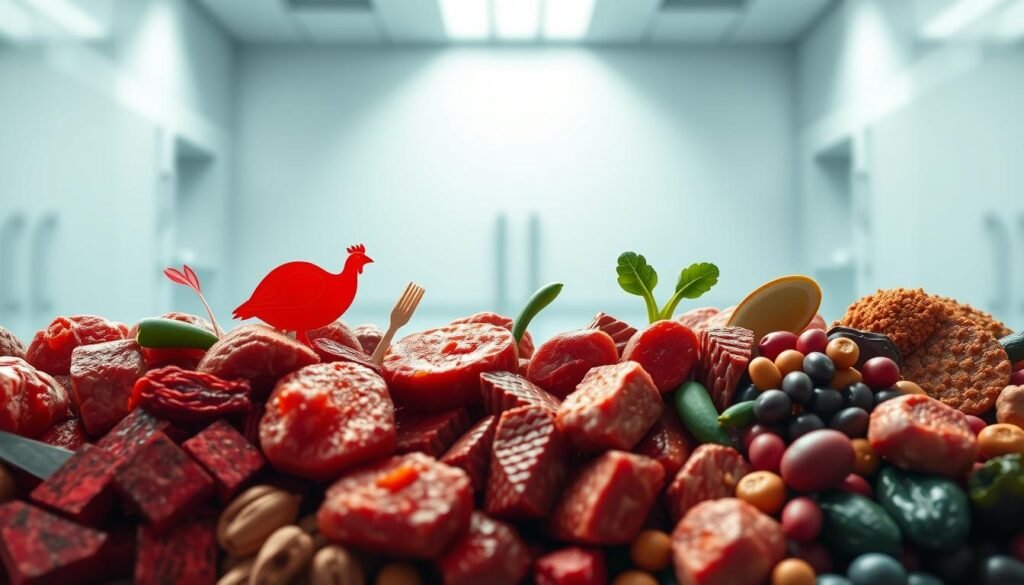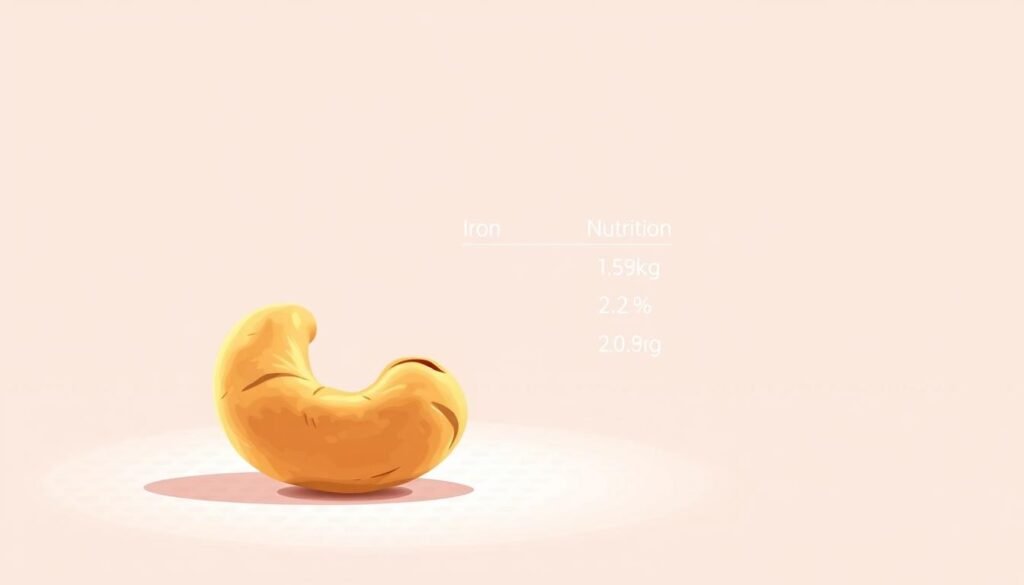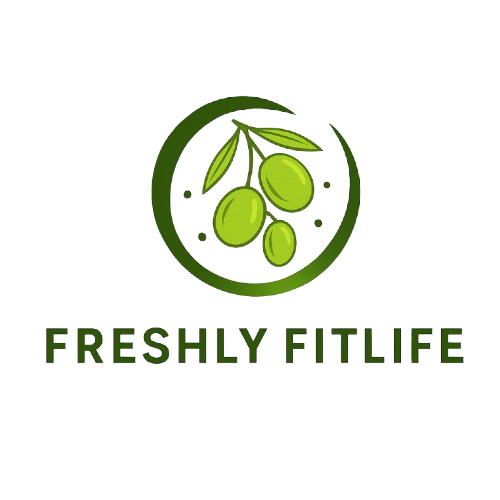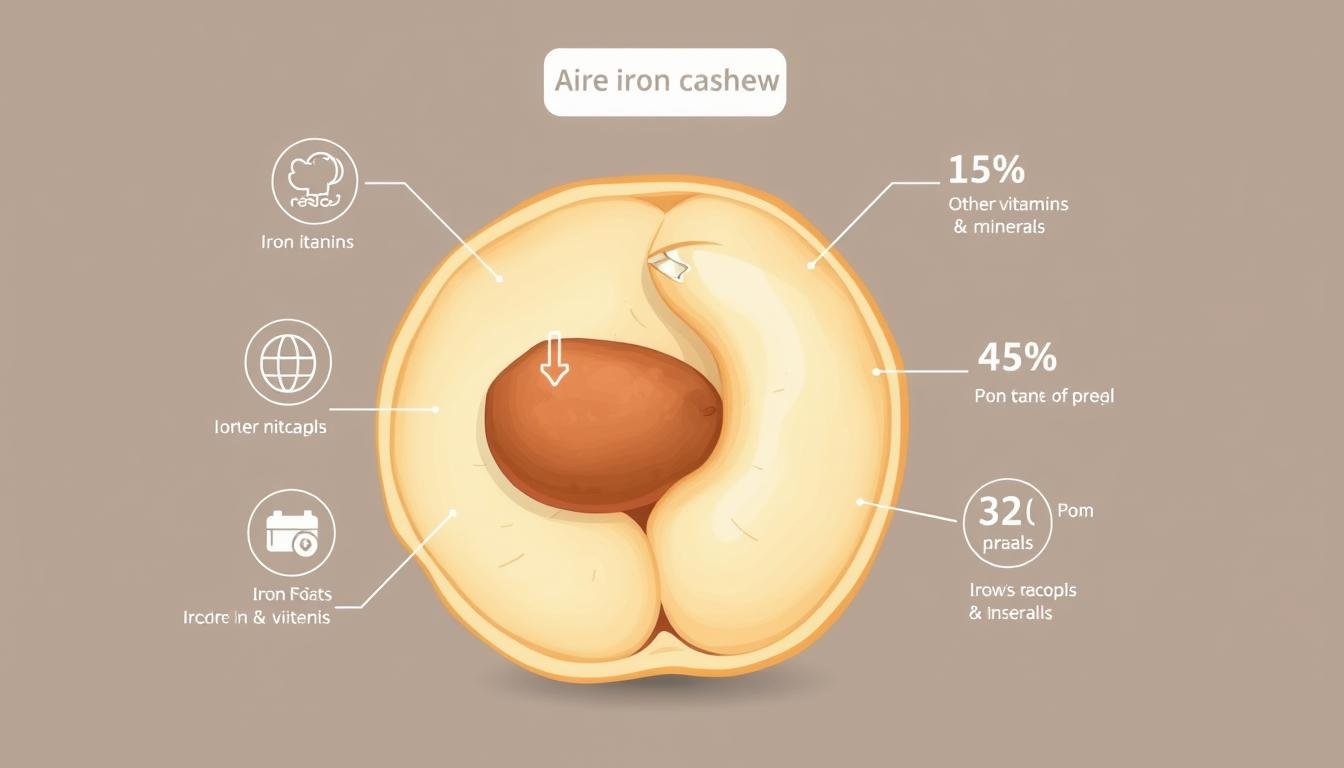What if your favorite snack could do more than satisfy cravings? Imagine crunching on something creamy and salty that also fuels your body with vital nutrients. Let’s settle the debate: do these crescent-shaped nuts deserve a spot in your iron-rich diet?
Roasted and salted varieties, like those from TFL, pack a surprising punch. Beyond their buttery flavor, they deliver essential minerals such as zinc and iron. These nutrients play starring roles in oxygen circulation and energy production—key for staying active and focused.
But how much iron do they really offer? We’ll break down USDA data and expert insights to separate facts from myths. You’ll also discover creative ways to use them in meals, proving healthy snacking doesn’t mean sacrificing taste.
Key Takeaways
- Cashews provide a moderate iron boost, ideal for plant-based diets.
- Pairing them with vitamin C-rich foods enhances iron absorption.
- They contain zinc and magnesium, supporting immune health and metabolism.
- Roasted versions retain most nutrients while adding satisfying crunch.
- Portion control matters—balance intake with other protein sources.
Introduction: Iron’s Role in Overall Health and Nutrition
Ever wonder why some days feel like climbing a mountain? Your iron levels might be whispering clues. This mineral acts like a backstage crew member, quietly powering oxygen delivery to every cell. Without it, energy production stalls, and fatigue crashes the party.

Nutrition expert Sue Van Raes compares iron to a “train conductor” for your blood. It guides oxygen molecules through the bloodstream, ensuring muscles and organs function smoothly. When levels dip, you might notice shortness of breath or difficulty focusing—classic signs of anemia.
The CDC reports nearly 10% of women and teens struggle with low iron. Smart food choices can turn this around. Pairing plant-based iron sources with vitamin C-rich foods boosts absorption dramatically. Try squeezing lemon over spinach or adding bell peppers to lentil soup!
| Iron Source Type | Examples | Absorption Rate |
|---|---|---|
| Heme (Animal) | Beef, Chicken, Fish | 15-35% |
| Nonheme (Plant) | Lentils, Spinach, Cashews | 2-20% |
| Fortified | Cereals, Oatmeal | 4-10% |
Meeting daily iron requirements isn’t just about what you eat—it’s how you combine nutrients. Even small tweaks, like drinking orange juice with breakfast oats, can make a big difference. Ready to explore which foods pack the strongest punch?
Understanding Iron in the Diet: Heme vs. Nonheme Sources
Iron isn’t just a single nutrient—it comes in two distinct forms that behave differently in your body. Knowing which type you’re eating can transform how you plan meals, especially if you avoid animal products. Let’s crack the code on these iron sources and their unique roles.

Why Iron Types Matter for Your Plate
Heme iron, found in meat and seafood, gets its name from hemoglobin—the protein that gives blood its red hue. Your body absorbs this form more efficiently, with studies showing rates between 15-35%. Think of it as a VIP pass for oxygen delivery to cells.
Plant-based foods like lentils and spinach offer nonheme iron, which requires teamwork for absorption. Pairing these with vitamin C-rich foods (like citrus or bell peppers) can boost uptake by up to six times. Nutritionists at Harvard’s Nutrition Source emphasize this strategy for vegans.
Here’s the twist: even meat-eaters get most of their iron from nonheme sources! Whole grains and fortified cereals quietly contribute to daily needs. For those exploring balanced diet strategies, combining both types ensures steady energy without overloading on calories.
Key takeaways? Heme iron delivers quick wins, while nonheme offers flexibility. Mix leafy greens with lean proteins or toss cashews into a mango salad. Your cells will thank you.
Are Cashews High in Iron? Exploring Cashew Nutrition Facts
Snack smarter, not harder—this creamy nut brings more than crunch to your plate. Let’s unpack what makes these crescent-shaped kernels a nutritional multitasker for plant-powered eaters.

Powerhouse in a Handful
One cup of raw cashews delivers 3.7 mg of iron—20% of daily needs. While not the highest among plant-based sources, they shine when combined with other iron-rich foods. Nutritionist Sue Van Raes notes: “Their versatility in vegan milks and sauces makes them an easy add-on for diverse diets.”
| Food (1 cup) | Iron (mg) | Protein (g) |
|---|---|---|
| Cashews | 3.7 | 15 |
| Cooked Spinach | 6.4 | 5 |
| Lentils | 6.6 | 18 |
| Tofu | 3.4 | 20 |
Beyond iron, these nuts pack magnesium for nerve function and heart-healthy fats. Their creamy texture works magic in dairy-free recipes—try blending ¼ cup into sauces or using cashew butter in energy balls.
Pair them with strawberries or bell peppers to boost absorption. Unlike some protein sources, they’re low in saturated fat while providing 5g of fiber per serving. Perfect for sprinkling on oatmeal or stirring into stir-fries.
Top Iron-Rich Foods and Their Benefits
Iron isn’t just found in meat—plants offer powerful options too. From leafy greens to crunchy seeds, these nutritional powerhouses keep energy levels steady while supporting overall wellness. Let’s explore the tastiest ways to meet daily needs.
Leafy Greens & Veggie Powerhouses
Spinach delivers 6.4 mg of iron per one cup cooked—more than a hamburger patty! Swiss chard follows closely with 4 mg per cooked cup, plus bone-strengthening vitamin K. Toss them into warm grain bowls or blend into smoothies with orange slices for enhanced absorption.
Legumes & Breakfast Boosters
Lentils pack 6.6 mg of iron and 15g protein per cooked cup. Red kidney beans outshine chicken with 5 mg iron and 13g fiber. For busy mornings, fortified cereals provide 18 mg per serving—pair with oats and berries for a quick iron-rich meal plan starter.
Seeds & Smart Pairings
Pumpkin seeds offer 2.5 mg iron per ounce—sprinkle over avocado toast or yogurt. Quinoa serves 2.8 mg per cooked cup, perfect for protein-packed salads. Combine these with vitamin C-rich tomatoes or citrus dressings to maximize nutrient uptake, as suggested in balanced diet strategies.
Pro tip: Roast chickpeas with turmeric for a crunchy salad topping—1/2 cup provides 2.4 mg iron and 6g fiber. Your plate becomes a flavor festival while fighting fatigue!
Cashews as an Iron Source: Nutritional Facts and Myths
Let’s crack the shell on cashew nutrition truths. While these creamy nuts won’t single-handedly solve iron deficiency, they play a valuable role in balanced diets. TFL’s roasted varieties deliver 2.1 mg of iron per ounce—equivalent to 12% of daily needs for adults.
Key Nutrients Beyond Iron in Cashews
Each handful packs a triple threat: 4g fiber for digestion, 5g protein for muscle support, and heart-healthy fats. Nutritionist Sue Van Raes notes: “Their magnesium content helps convert food into energy—a game-changer for those managing low iron fatigue.”
USDA data reveals they outshine almonds in zinc and copper. These nutrients team up with iron to boost immunity and cognitive function. Pair them with oranges or bell peppers to maximize mineral absorption.
Myth-Busting Common Cashew Controversies
Contrary to online rumors, cashews don’t block iron uptake. Research shows their phytic acid levels are lower than almonds, making them friendlier for mineral absorption. They actually enhance diets when combined with vitamin C sources.
| Food (1 oz) | Iron (mg) | Fiber (g) |
|---|---|---|
| Cashews | 2.1 | 4 |
| Spinach (raw) | 0.8 | 0.7 |
| Lentils (cooked) | 3.3 | 8 |
| Almonds | 1.1 | 3.5 |
While not the highest rich source, they’re a tasty bridge between meals. Enjoy 1-2 ounces daily alongside leafy greens or fortified cereals. Your body gets steady nutrient support without calorie overload.
Innovative Recipes Featuring Iron-Rich Cashews
Transform ordinary meals into nutrient powerhouses with these kitchen-tested ideas. From sunrise scrambles to midnight snacks, discover how to maximize flavor while boosting mineral intake.
Savory Power Plates
Whip up a Thai-inspired stir-fry with ¼ cup crushed kernels and pumpkin seeds. Sauté bell peppers, broccoli, and tofu in cashew butter sauce—each dish delivers 4mg iron per serving. Pro tip: Toast seeds separately for extra crunch.
Sweet Energy Boosters
Blend ½ cup rolled oats with cashew butter and dried apricots for no-bake bars. These portable snacks pack 3g protein and 2mg iron each. Sprinkle chia seeds on top for omega-3s and visual appeal.
| Recipe | Prep Time | Iron per Serving | Key Nutrients |
|---|---|---|---|
| Cashew Curry Bowl | 25 mins | 3.2mg | Protein, Vitamin C |
| Pumpkin Seed Trail Mix | 5 mins | 1.8mg | Fiber, Magnesium |
| Overnight Oats | 10 mins | 2.4mg | Calcium, B Vitamins |
Morning hack: Stir 2 tbsp cashew cream into coffee instead of dairy. Pair with one cup spinach omelet for balanced breakfast iron levels. Evening twist? Crush roasted kernels over sweet potato fries—drizzle with lime for absorption-boosting zest.
Optimizing Iron Absorption: Diet and Lifestyle Tips
Your morning coffee might be sabotaging your nutrient intake—here’s how to fix it. While getting enough iron per day matters, what you pair it with determines how much your body actually uses. Let’s explore simple swaps that turn meals into mineral powerhouses.
Pairing Iron with Vitamin C for Better Absorption
Combine plant-based foods high in iron with citrus or bell peppers. Nutritionist Sue Van Raes shares: “Adding strawberries to spinach salad boosted my blood iron levels faster than supplements alone.” USDA research confirms vitamin C can triple nonheme iron absorption.
| Avoid With Iron | Pair With Iron | Boost Effect |
|---|---|---|
| Coffee/Tea | Orange Juice | +67% uptake |
| Dairy Products | Broccoli | +50% uptake |
| Red Wine | Kiwi | +45% uptake |
Lifestyle Changes and Supplementation Strategies
Time iron supplements between meals for better absorption. Sue combines hers with yoga sessions to reduce inflammation—a known iron blocker. For best results:
- Take 100mg vitamin C with iron-rich meals
- Wait 2 hours after eating before drinking tea
- Choose cast-iron cookware for acidic dishes
Even light exercise like walking improves circulation, helping distribute minerals through your body. Remember—consistent small changes create big impacts over time!
Supporting Iron Health in Vegetarian and Vegan Diets
Plant-powered plates can fuel your body just as effectively as steak—if you know the right combinations. Vegetarians and vegans often face a double challenge: sourcing enough nonheme iron and ensuring optimal absorption. But with smart pairings and creative recipes, maintaining healthy levels becomes effortless.
Mastering Mineral Absorption
Nutrition expert Sue Van Raes explains: “Lentils and leafy greens become superheroes when paired with lemon juice or tomatoes.” A single cup of cooked lentils provides 6.6 mg of iron—37% of daily needs for women. Toss them into a spinach salad with orange slices to boost uptake by 300%.
USDA data highlights other iron-rich staples perfect for plant-based diets:
- Broccoli (1 cup cooked): 1 mg iron + 100% daily vitamin C
- Chickpeas (½ cup): 2.4 mg iron + 6g protein
- Fortified oatmeal (1 packet): 11 mg iron
Try these simple swaps to upgrade meals:
| Meal | Iron Boost | Vitamin C Pairing |
|---|---|---|
| Breakfast | Fortified cereal | Kiwi slices |
| Lunch | Quinoa salad | Bell pepper strips |
| Dinner | Lentil stew | Steamed kale |
For busy days, blend cooked white beans into dips or stir tahini into soups. These small tweaks help maintain energy levels while supporting overall wellness. Remember—variety is key to unlocking your diet’s full potential!
Conclusion
Fueling your body wisely starts with smart choices. These creamy nuts deliver 2.1 mg of iron per ounce—a tasty boost alongside lentils and spinach. Pairing them with citrus or bell peppers, as Sue Van Raes recommends, can triple mineral absorption for lasting energy.
USDA data shows one cup of cooked lentils meets 37% of daily iron needs. TFL’s roasted varieties add crunch while preserving nutrients like magnesium and zinc. For those managing low iron levels, blending plant-based sources with vitamin C creates meals that work harder.
Simple swaps make big impacts:
- Add pumpkin seeds to oatmeal at breakfast
- Mix cashew butter into stir-fries for creamy texture
- Roast chickpeas with turmeric for snackable crunch
Recent research confirms these strategies help maintain healthy cells and prevent fatigue. Ready to upgrade your plate? Explore our creative recipes and turn every dish into a nutrient powerhouse. Your journey to balanced eating starts here!




